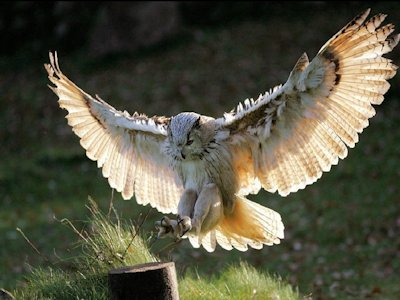
|
Landing Bird Flight
All birds have in common legs and feet that act as landing gear. This landing gear helps them take flight from a stationary position and cushions them during landing. The extent to which birds are able to use this landing gear, however, varies among species. For example, in the better fliers, such as hummingbirds, swifts, and swallows, the legs are weaker and less useful as landing gear; birds such as roadrunners, grouse, and ptarmigans have strong legs but are not especially skillful fliers. In landing, birds use their legs and feet both as air brakes and to grasp the perch or surface. Small birds often land by gauging a desired perch and then by flying at a speed approaching zero at or slightly above the area; the legs and feet then serve the simple function of grasping the perch. Obliged to land at high speeds, most large birds use a ballistic approach; they dive at high speed to just below the desired land site and then pull up into a steep climb, resulting in zero sir speed at the landing site. |
|
A Great Horned Owl spreads its wings, tail, and feet for maximum braking power
as it pulls up for a landing on a dead snag.
A high landing speed does not pose a problem for water birds because they can effectively hydroplane to a halt with their large feet, Most large seabirds are adapted to alight on water, but if necessary they can use their landing gear to accomplish adequate, if clumsy, ground landing. Bird's feet do not have to be webbed to be effective air brakes. The legs of birds of prey are heavy enough to perform this function. The long legs of storks, herons, cranes, and rails are also excellent drag generators when in landing position. |
|